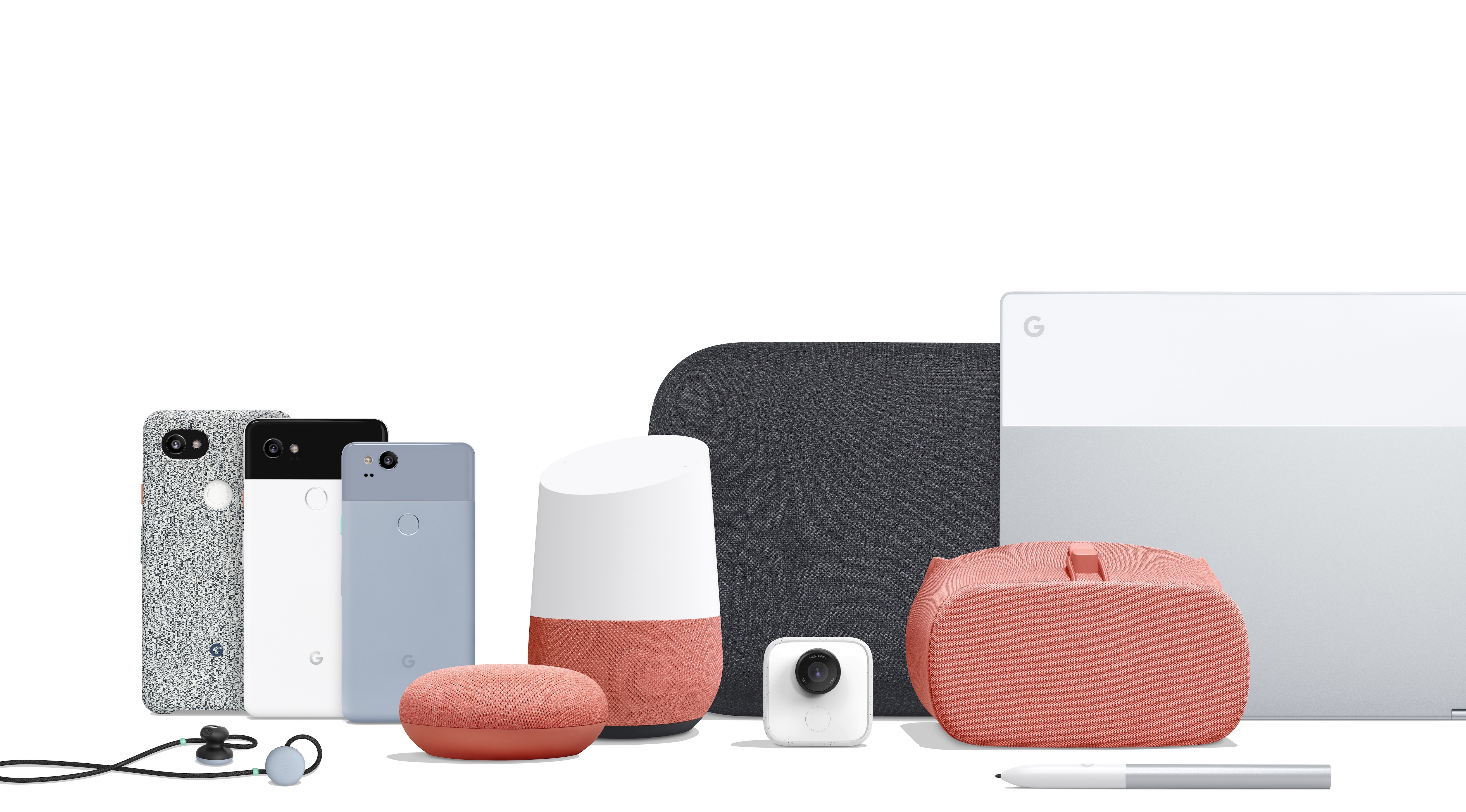OK Google, Get Out of My Face

Today I got a glimpse of the future. It’s overwhelming. And it’s amazing. But it’s also very scary.
I was at a press event Wednesday in San Francisco, where Google introduced its newest slate of products. There were a lot of updates to existing products: shiny Pixel 2 and Pixel 2 XL smartphones, a new version of the Daydream virtual-reality headset, smaller and larger versions of Google’s Home personal assistant speaker, and a convertible Pixelbook laptop. There were also two less-expected items: a square life-logging camera called Pixel Clips and a pair of wireless earbuds called Pixel Buds aimed at real-time (or, probably more realistically, close to real-time) translation when used with one of the company’s Pixel smartphones.
It was a lot of stuff. Much of it in a very appealing shade of gray, with lovely fabric covering gadget innards. More than the visuals, though, what struck me was the message: love it or hate it, this is the future, and the future means computers are everywhere, accessible in all kinds of ways, for all kinds of things.
This ubiquitous, or pervasive, computing isn’t a new idea—we’ve long seen it in the march of “smart” devices like TV sets, thermostats, coffee pots, watches, cars, and so on. Many of us now rely on many computers just to get through the day, not including a smartphone and a laptop. What is new—or newer, at least—and keeps improving at a rapid pace is the infusion of machine-learning capabilities that help these computers do everything from giving you directions to a hip bar in Ubud when you don’t speak any Indonesian to automatically and purposefully taking photos of people you love.
From the stage, Google CEO Sundar Pichai framed the company’s AI-first approach as enabling people to interact with computers in a more conversational, “sensory” way where we use voices, gestures, and vision to make these exchanges more seamless. Computing should be ambient and multi-device, he said; it should be “thoughtfully contextual,” and AI can make this happen while getting smarter over time.
On the one hand, these devices do communicate these goals. They hold the promise of a future where technology is more seamlessly integrated into our lives, and it sounds fantastic. For instance, in an on-stage demo, the Pixel Buds quickly performed a translation from Swedish to English and vice versa between Google’s Home lead designer Isabelle Olsson, who wore the earbuds and spoke in her native Swedish, and Google product manager Juston Payne, who held a Pixel handset. The possibilities for such a device for travel—hell, even for communicating in the Bay Area—are endless.
The Pixel Clips camera paints a similar future of convenience and delight. You could clip this little device to a bag of flour on your kitchen counter, as a Google video showed us audience members, and capture a fun baking session with your kid without ever having to touch the technology.
Then there’s the other hand. Do you want a camera in your home, deciding when is a good time to take a photo of you, or your child or spouse, possibly capturing first steps and birthdays, but also so much more? I have a one-year-old, and the idea immediately repelled me; I already feel guilty when I take time out of our regular routine to snap photos, but then, at least, I’m doing it intentionally.
How about speakers all over your house that have been optimized to understand your kids’ requests? That’s something Google also introduced with Home, which has 15 new experiences for kids ranging from using the company’s Assistant to tell jokes, playing games like musical chairs or space trivia, or telling stories. It’s typically hard for voice-recognition technology to understand children’s voices, so getting this to work is impressive, and it does work with the company’s Family Link software that lets parents monitor and control kids’ Android-related activities.
Increasingly, this sort of AI is compact enough to run directly on a smartphone, camera, or speaker itself, without needing Internet connectivity to function. This is often touted (rightly so) as a boon for user privacy—Google, in fact, positioned this feature as such when introducing Pixel Clips, a $249 camera that is “coming soon,” and the Pixel 2 smartphones.
But it also means that as long as these devices have power, they have some powerful features. Pixel Clips never needs to be online; it will shoot short videos and they will all be waiting for you when you decide to share them with others or add them to the cloud-based Google Photos service. An on-stage demo showed how Pixel phones will still be able to use on-device machine learning to recognize songs playing out loud—say, at your local coffee shop—and show you the name of the track and artist on the phone’s lock screen.
Depending on your perspective, that could be great, or horrible. And as I see it getting better and better before my eyes, I think it’s a little bit of both.
Keep Reading
Most Popular
Large language models can do jaw-dropping things. But nobody knows exactly why.
And that's a problem. Figuring it out is one of the biggest scientific puzzles of our time and a crucial step towards controlling more powerful future models.
The problem with plug-in hybrids? Their drivers.
Plug-in hybrids are often sold as a transition to EVs, but new data from Europe shows we’re still underestimating the emissions they produce.
Google DeepMind’s new generative model makes Super Mario–like games from scratch
Genie learns how to control games by watching hours and hours of video. It could help train next-gen robots too.
How scientists traced a mysterious covid case back to six toilets
When wastewater surveillance turns into a hunt for a single infected individual, the ethics get tricky.
Stay connected
Get the latest updates from
MIT Technology Review
Discover special offers, top stories, upcoming events, and more.